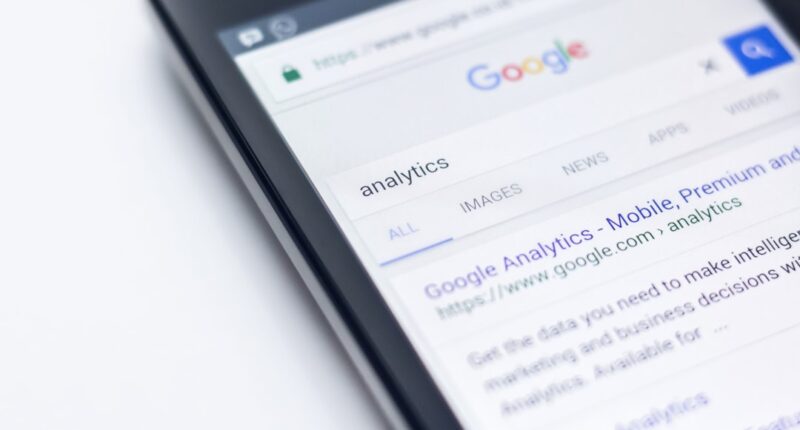Technology has played a major role in the changes that marketing has experienced in the modern day. With the rise of digital marketing, companies now have new and creative ways to engage with their target market. In addition, conventional marketing strategies such as radio, television, and print advertising are still applicable and useful in some situations.
Key Takeaways
- Digital marketing offers the advantage of utilizing user-generated content (UGC) creators and influencer marketing for increased effectiveness.
- Traditional marketing still holds power in leveraging print, TV, and radio advertising to reach a wide audience.
- Digital marketing often provides a more cost-effective return on investment (ROI) compared to traditional marketing methods.
- Social media marketing plays a crucial role in engaging with consumers in the digital age and should be a key component of any marketing strategy.
- Integrating digital and traditional marketing is essential for creating a holistic marketing strategy that reaches both online and offline audiences.
Knowing the differences between digital & traditional marketing is crucial for companies looking to create an effective marketing strategy that connects with their target market. Social media marketing, content marketing, email marketing, search engine optimization (SEO), and influencer marketing are just a few of the online tactics that fall under the umbrella of digital marketing. With these strategies, companies can engage with their audience in real time, build rapport, and use analytics to gauge the success of their campaigns. On the other hand, traditional marketing makes use of conventional media like direct mail, radio spots, television commercials, and print ads. Although these techniques might not provide the same instantaneous engagement and tracking options as digital marketing, they still have the ability to impact a large audience & last.
User-generated Content: Its Power. Using user-generated content (UGC) creators is one of the core tactics in digital marketing. Everyday people who produce content about a brand or product and post it on social media are known as user-generated content (UGC) creators. This kind of content is a potent tool for companies trying to establish credibility & brand awareness because consumers view it as more real and reliable. Influencer Marketing: An Important Resource.
With influencer marketing, however, a company or product is promoted by collaborating with people who have a sizable social media following. Because these influencers have the power to affect the purchases made by their followers, they are invaluable resources for companies trying to grow. Meticulous results and precise targeting. Digital marketing also has the benefit of precise targeting and personalization in addition to UGC creators and influencer marketing.
Businesses can target particular demographics, interests, and behaviors through social media platforms and online advertising, ensuring that the right people see their message. Higher conversion rates and a more economical use of marketing funds are made possible by this degree of targeting. Moreover, real-time tracking and campaign performance measurement are made possible by digital marketing, which enables companies to optimize their strategies & make data-driven decisions for improved outcomes. Traditional marketing techniques like print, TV, and radio advertising still have value in some circumstances, even though digital marketing has become increasingly popular in recent years.
It is still possible to reach particular demographics or local audiences with print advertising in newspapers, magazines, and direct mail. Similar to this, television ads have the power to use sight, sound, and motion to reach a large audience and leave a lasting impression. Radio advertising is still a highly effective way to reach consumers at home or on their daily commutes. The ability of traditional marketing to leave a lasting impression through tangible items or unique experiences is one of its main advantages.
Television and radio commercials have the power to elicit strong emotional reactions through storytelling & audio-visual elements, whereas print advertisements can be physically held and viewed again. Also, reaching older demographics who might not be as active on digital platforms can be especially successful with traditional marketing techniques. Businesses can develop a well-rounded strategy that appeals to a larger spectrum of customers by combining the strength of traditional marketing with digital initiatives. In terms of ROI comparison, digital and traditional marketing each have advantages and disadvantages of their own. Because it can track performance in real-time, target specific audiences, and optimize campaigns using data-driven insights, digital marketing frequently offers a higher return on investment.
Businesses can focus on strategies that yield the best results and more effectively allocate their budgets by utilizing digital marketing. Plus, because companies can modify their spending according to performance indicators, digital marketing gives them more budgetary flexibility. However, in certain situations, traditional marketing techniques can still yield a high return on investment even though they might demand a higher initial outlay. One effective way to reach millions of viewers and make an impact is by airing a well-written television commercial during a major event.
Analogously, by reaching a highly specific audience, print advertising in specialized publications can result in a high return on investment. Even though digital marketing provides real-time tracking to a greater extent than traditional marketing, well-executed traditional marketing can still yield noteworthy outcomes. Due to its ability to facilitate real-time consumer engagement and the development of deep connections with viewers, social media marketing has become a crucial component of digital marketing methodologies. Businesses can share content, engage with followers, run targeted ads, and gain important insights about the preferences & behaviors of their audience by using platforms like Facebook, Instagram, Twitter, LinkedIn, and TikTok.
Social media offers a platform for influencer partnerships and user-generated content (UGC) creators, enabling businesses to harness the massive potential of word-of-mouth marketing. Social media marketing is vital for customer service and brand awareness in addition to engagement and relationship-building. Businesses can improve their accessibility & visibility to customers by being active on social media platforms. In addition, social media offers a direct channel of contact for client questions, comments, and assistance. The degree of responsiveness & transparency displayed here can have a big impact on customer loyalty and confidence.
Forming an All-encompassing Method. While there are many benefits to targeting, tracking, and engaging with digital marketing, combining digital & traditional marketing techniques can result in a comprehensive strategy that optimizes impact and reach. Businesses can create a well-rounded marketing strategy that resonates with diverse audiences across various channels by combining the strengths of both digital & traditional tactics.
focused interaction & awareness of the brand. For instance, a company may combine traditional techniques to build brand awareness and leave a lasting impression with digital marketing to enable precise targeting and real-time engagement. Engaging with Customers at Various Touchpoints.
Businesses can also interact with customers at various touchpoints during their purchasing process by combining traditional and digital marketing. As an example, a customer might come across a brand via a social media advertisement, then interact with it more through influencer content, and eventually buy from the brand after seeing an effective television ad. To sum up, firms hoping to develop a successful marketing plan that connects with their target market must comprehend the distinctions between traditional and digital marketing. Traditional marketing strategies like print, TV, and radio advertising still have value in leaving a lasting impression and reaching particular demographics, even though digital marketing offers precise targeting, real-time tracking, and engagement opportunities through UGC creators & influencer partnerships.
In terms of return on investment, both traditional and digital marketing have advantages and, when used wisely, can produce noteworthy outcomes. In the current digital era, social media marketing is essential for interacting with customers, increasing brand recognition, and offering customer support. Businesses can establish significant connections with their audience through social media platform maintenance, influencer partnerships, and user-generated content (UGC) creators. At the end of the day, companies can develop a comprehensive strategy that optimizes impact and reach across multiple channels by combining digital and traditional marketing tactics.
Businesses can create a well-rounded marketing strategy that resonates with diverse audiences throughout their purchasing journey by striking the right balance between digital and traditional tactics.
FAQs
What is digital marketing?
Digital marketing refers to the use of digital channels such as social media, search engines, email, and websites to connect with current and prospective customers. It encompasses a wide range of tactics including content marketing, search engine optimization (SEO), social media marketing, and online advertising.
What is traditional marketing?
Traditional marketing refers to any type of marketing that isn’t online. This includes print advertisements, billboards, television and radio commercials, direct mail, and telemarketing. It has been the primary form of marketing for centuries.
Which is more effective, digital marketing or traditional marketing?
The effectiveness of digital marketing versus traditional marketing depends on the specific goals of a business and its target audience. Digital marketing is often more cost-effective and provides more precise targeting options, while traditional marketing can be more impactful for certain demographics and can help build brand recognition.
What are the advantages of digital marketing?
Digital marketing offers advantages such as the ability to reach a global audience, precise targeting options, real-time results tracking, and the ability to engage with customers through various digital channels.
What are the advantages of traditional marketing?
Traditional marketing can be effective for reaching local audiences, building brand recognition through tangible materials, and reaching demographics that may not be as active online. It can also create a more personal connection with consumers through face-to-face interactions.
Can digital marketing and traditional marketing be used together?
Yes, many businesses use a combination of digital and traditional marketing tactics to reach a wider audience and achieve their marketing goals. This approach, known as integrated marketing, allows businesses to leverage the strengths of both digital and traditional marketing.





